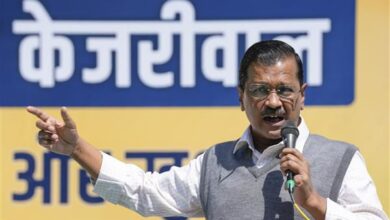How India Was Shaped by the Historic 1991 Economic Reforms Under PV Narasimha Rao | Explanation
Prime Minister Narendra Modi said on Friday that P V Narasimha Rao, the former prime minister, would receive the Bharat Ratna award. He said that Rao’s inspirational leadership was crucial in moving India’s economy forward and creating a strong basis for future development. Learn about the landmark economic changes implemented in India in 1991, during Rao’s tenure as prime minister.

Prime Minister Narendra Modi wrote on X that “Narasimha Rao Garu’s tenure as Prime Minister was marked by significant measures that opened India to global markets, fostering a new era of economic development.”
What Motivated the 1991 Economic Reforms?
The nation had a balance of payments (BoP) crisis during which its foreign exchange reserves could only cover 15 days’ worth of imports. These economic hardships led to the economic reforms of 1991.
What Caused the 1991 BoP Crisis?
Fiscal Deficit: In 1990–91, the nation’s fiscal deficit amounted to 8.4% of GDP. The gap between the government’s total outlays and receipts is known as the fiscal deficit. It serves as a gauge for the overall amount of borrowing the government will need.
Gulf War I: In 1990–91, the geopolitical crisis in West Asia made matters worse for the country’s economy. Iraq’s invasion of Kuwait caused a sharp increase in crude oil prices.
High Inflation: During that time, India’s inflation rate also increased significantly. The country’s economic position deteriorated as a result of the fast expansion in the money supply, which caused it to accelerate from 6.7% to 16.7%.
The Reforms of 1991
Under P V Narasimha Rao’s prime ministership, former prime minister Manmohan Singh, who was the finance minister at the time, initiated India’s largest economic reforms to pull the nation out of the severe economic crisis of 1991. The liberalization, privatization, and globalization (LPG) paradigm served as the foundation for the momentous economic changes that opened up the economy.
Liberalization: This resulted in the repeal of the Industrial License Raj. Nowadays, only a small number of businesses that posed a risk, like chemicals, needed a license. All other industries might be established without a license, with the exception of those. Interest rates and other decisions were left up to the commercial banks.
Privatization: This led to the introduction of banking reforms. The markets lost their regularity. Private sectors were established. Private entities were permitted to purchase PSU shares.
Globalization led to a decrease in import taxes. The value of the Indian rupee started to fluctuate. The list of import restrictions was removed for all capital and intermediate items. Foreign investment and international commerce were allowed into the economy.







